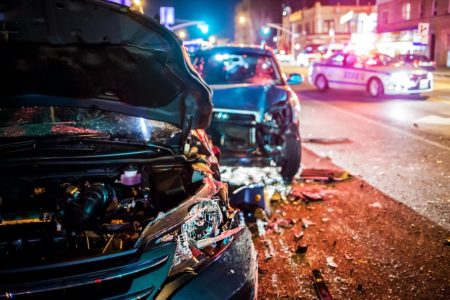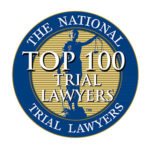Car accidents often come out of the blue. One minute, you may think that everything has continued as usual and that you will not face any problems out on the road. The next, you may find yourself with serious injuries, substantial damage to your vehicle, and a host of problems, including challenges that may continue to impact you long after the initial accident. Understanding how a car accident occurred can help determine who bears liability for the car accident and how you may need to navigate the aftermath of your claim. Car accident attorneys are highly skilled in presenting evidence to prove liability in a car accident.
Rear-End Collisions

Rear-end collisions occur when one driver strikes another in the vehicle’s rear. Rear-end collisions frequently take place at intersections. The front vehicle may come to a stop, but the rear vehicle may not stop or slow in time. These collisions can, however, occur anywhere on the road, including interstates and highways, often due to tailgating.
Rear-end collisions may occur for several reasons. Often, they occur because of speeding or tailgating on the part of the rear driver. In other cases, they may occur because of driver distraction since distracted drivers may not leave themselves enough time to avoid potential collisions adequately or may fail to note that the driver in front of them has come to a stop.
Sideswipe Collisions
A sideswipe collision occurs when one driver swipes another in the side. Sideswipe collisions can occur in a variety of circumstances. Often, they occur because the liable driver grew distracted while driving.
In that case, sideswipe collisions may occur anywhere on the road. A driver who grows distracted may drift out of his assigned lane, making it impossible for drivers traveling down either lane to avoid him. A sideswipe collision can even occur with vehicles at the side of the road, especially if the liable driver grows distracted or fails to allow adequate room to pass those vehicles.
T-Bone Collisions
In a T-bone collision, one driver strikes the other directly in the side, creating a T shape between the two vehicles. A T-bone collision can cause devastating injury to the passengers on the side of the vehicle struck directly. Many vehicles have a different level of protection at the sides than at the front and rear. The bumpers can help absorb the force when a front-on or rear-end collision occurs. In a T-bone collision, however, passengers rely on vehicle-side-impact protection to help absorb that force and reduce injury.
T-bone collisions most often occur due to driver distraction or trying to ignore the rules of the road when passing through an intersection. In an intersection, drivers must yield the right of way to the driver that has the right to go through that intersection first. However, some drivers may try to force their way through the intersection, causing a T-bone collision.
Other drivers may ignore signs warning about the intersection entirely, sailing straight through without paying attention to traffic flow or the danger of striking another driver.
Head-On Collisions
Head-on collisions can cause some of the highest degrees of devastating injury because they bring the combined force of both vehicles together In a head-on collision, the liable driver strikes the other vehicle directly in the front.
Head-on collisions may occur when a driver travels the wrong way down a road or swerves abruptly out of his assigned traffic lane and into an oncoming lane. Often, a head-on collision occurs due to drunk or distracted driving, but it may also occur because a driver engages in aggressive driving tactics.
Drunk Driving Accidents
Every day, 29 people across the United States die in drunk driving accidents and even more suffer severe injuries. After a suspected drunk driving accident, the police may want to conduct a blood alcohol test on the alleged drunk driver to determine whether that driver chose to drive while intoxicated.
A drunk driver may, in addition to bearing liability for an accident caused by that act of negligence, end up facing criminal consequences for driving while intoxicated, including potential license loss, fines, and punitive damages designed to discourage drunk driving.
Drunk driving accidents may, in many cases, cause more severe injuries than other types of accidents because the drunk driver has little control over the vehicle. Drunk drivers struggle with a loss of motor control, poor reflexes, and poor decision-making skills, all of which may prevent them from taking vital steps that could limit the impact of a devastating collision. As a result, drunk driving accidents may have a higher risk of resulting in a fatality than other types of accidents.
Rollover Accidents
In a rollover accident, the vehicle typically tips off the side of the road and rolls over. Rollover accidents often occur because the vehicle loses traction on the road or suffers an abrupt collision that results in the vehicle tipping over.
A rollover accident can cause severe damage to the vehicle and everyone in it. Often, a rollover collision causes everything in the vehicle to bounce around inside, which can lead to more bruises and lacerations. Items flying around in the vehicle can also cause a higher risk of broken bones, head injuries, and other severe injuries.
Rollover accidents also generally involve a great deal of force. While some vehicles, including large SUVs, have a greater overall risk of rolling over due to the top-heavy construction of the vehicle, it still takes a great deal of force to make a vehicle rollover. Extreme force may mean more severe injuries for people inside the vehicle.
Distracted Driving Accidents
Distracted driving contributes to a high percentage of accidents. Often, distracted drivers find themselves looking down at something in their hands, including a cell phone or other device, instead of paying attention to the road. As a result, distracted drivers have a severe risk of getting involved in dangerous accidents.
Many people assume that distracted driving mostly focuses on cell phone use. However, distracted drivers may engage in various other dangerous behaviors, including eating or drinking behind the wheel, chatting with friends in the car, or even changing the radio stations or using the vehicle’s heating and air controls. Children or pets in the vehicle can also prove very distracting.
Big Truck Accidents
Accidents with big trucks often mean substantial injuries and, in many cases, a more in-depth fight with the insurance company to recover the compensation you reasonably deserve for those injuries. Big truck drivers may cause more serious injuries when they end up involved in an accident since their larger vehicles may cause more damage to the other driver’s vehicle and the passengers inside it.
Big truck drivers may cause auto accidents for several reasons, including distraction, blind spot accidents, and difficulty navigating in tight traffic. In addition, sometimes, truck drivers may make dangerous decisions that can increase the risk of an accident, including speeding or ignoring the rules of the road, or driving in dangerous conditions.
In some cases, trucking companies may share liability with their drivers for accidents due to the company’s negligence. Trucking companies may share liability for accidents because the trucking company’s policies pressured the driver to ignore the road rules or when a trucking company fails to maintain its vehicles adequately.
Mechanical Failures
When a mechanical failure occurs on the road, it can create severe problems for both the driver of the vehicle and the people on the road around him. Often, mechanical failures cause the vehicle to stop working in a way necessary to keep the vehicle moving smoothly down the road.
That can mean that the steering locks up, a tire blows out, or an engine or transmission problem makes it impossible to steer the vehicle safely. Mechanical failures may occur for several reasons, including lack of maintenance. However, they often occur because of some manufacturing defect. When a manufacturing defect leads to a car accident, the manufacturer of the vehicle or of the failed component may bear liability for the accident.
In addition, mechanical problems can occur because a mechanic fails to take care of a vehicle’s repairs. That mechanic may bear liability if he certifies the vehicle as road-worthy, but the vehicle still has serious issues that he failed to repair or if he damaged the vehicle in the course of making those repairs.
It can prove difficult to establish whether a mechanical failure led to an accident. The driver of the vehicle may know that something went wrong with the vehicle but not exactly what or why. Careful evaluation by an expert witness may make it easier to determine what type of failure occurred, why it happened, and whether the manufacturer’s negligence may have contributed to the accident.
Aggressive Driving Incidents
Aggressive driving incidents, including road rage, continue to rise. Many drivers do not think twice about raging behind the wheel. They may swerve through traffic, tailgate, or even attempt to force other drivers off the road. Road rage can cause drivers to behave in ways they would not ordinarily behave, placing both those drivers and others in the vehicles around them in unexpected danger.
Aggressive driving can include road rage behaviors, but it may also mean aggressively weaving through traffic, cutting off other drivers, or trying to push another driver off the road. Sometimes, those incidents do not result from road rage but from the desire to maintain control over everything around the driver on the road. Aggressive driving often causes severe injuries or death because the aggressive driver may not take steps to prevent an accident or reduce the severity of that accident.
Pedestrian Accidents
When vehicles are involved in an accident with a pedestrian, the pedestrian often suffers substantial injury. Unlike passengers in motor vehicles, pedestrians have nothing to protect them from the collision, whether they hit the vehicle directly or strike someone else in the area. Pedestrian accidents can result from driver distraction or drivers who ignore the road rules. In addition, pedestrians may engage in dangerous or reckless behaviors that may increase the risk of an accident.
Pedestrian accidents can occur anywhere. However, they may occur more often at dangerous intersections, especially those not marked well, to help make it easier for pedestrians to cross safely. Pedestrian accidents may also occur in private neighborhoods, especially those that may not have sidewalks that help make it easier for pedestrians to get around safely.
Motorcycle Accidents
Motorcycle riders have a higher risk of ending up involved in a collision by vehicle miles driven. Motorcycles take up less space on the road and generally prove more maneuverable than passenger vehicles. However, they also do not fit the visual profile that most drivers look for when they take stock of what takes place around them, which means that those drivers may not actively notice the presence of a motorcycle around them.
Furthermore, motorcycle accidents may result in significant injury to the motorcycle rider since motorcycles do not protect against an accident. The drivers of passenger vehicles around the motorcycle will often bear liability for the accident. However, in some cases, the motorcycle rider may engage in dangerous or reckless behaviors, including speeding, lane splitting, or cutting through traffic, that may raise their risk of injury in an accident.
A Lawyer Can Help After Your Car Accident
If you suffered injuries in any car accident, you might need to file a personal injury claim to help you pursue compensation for those injuries. Contact a car accident lawyer to learn more about how to file your claim.

